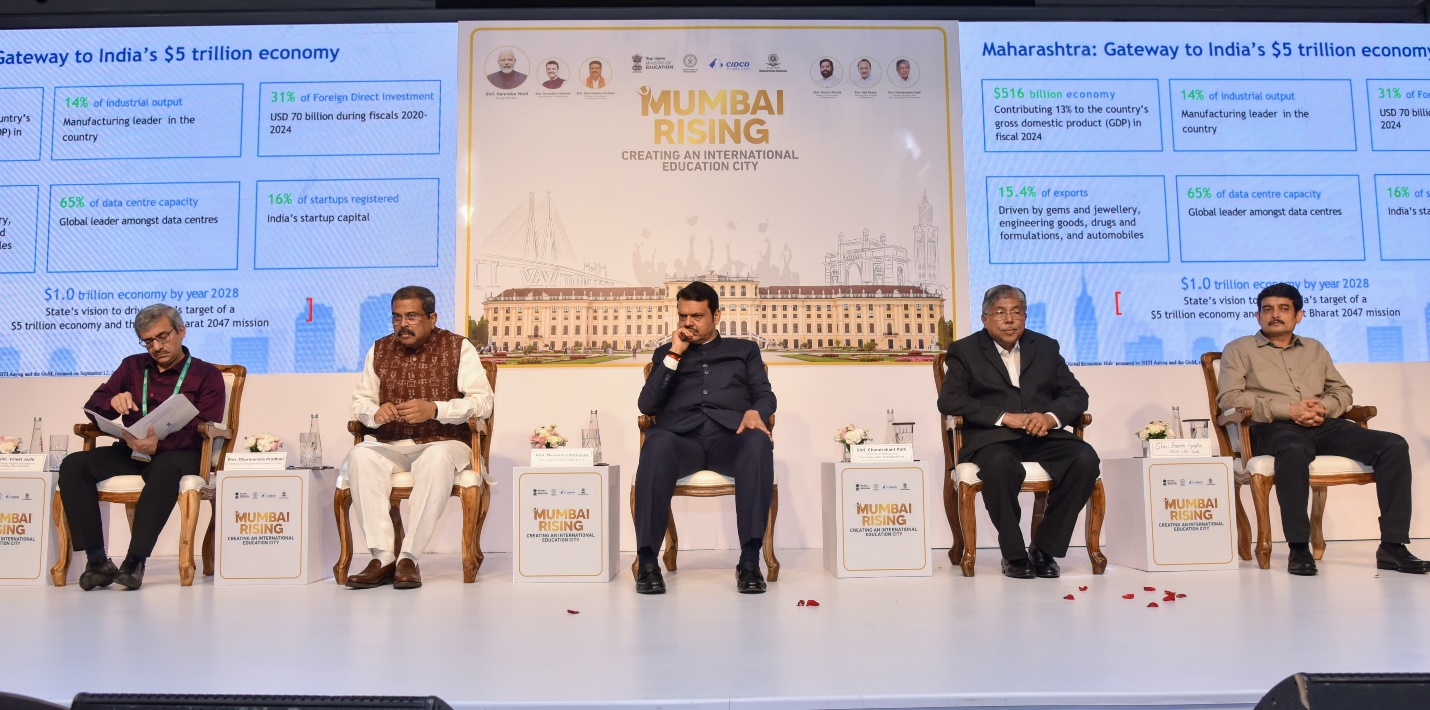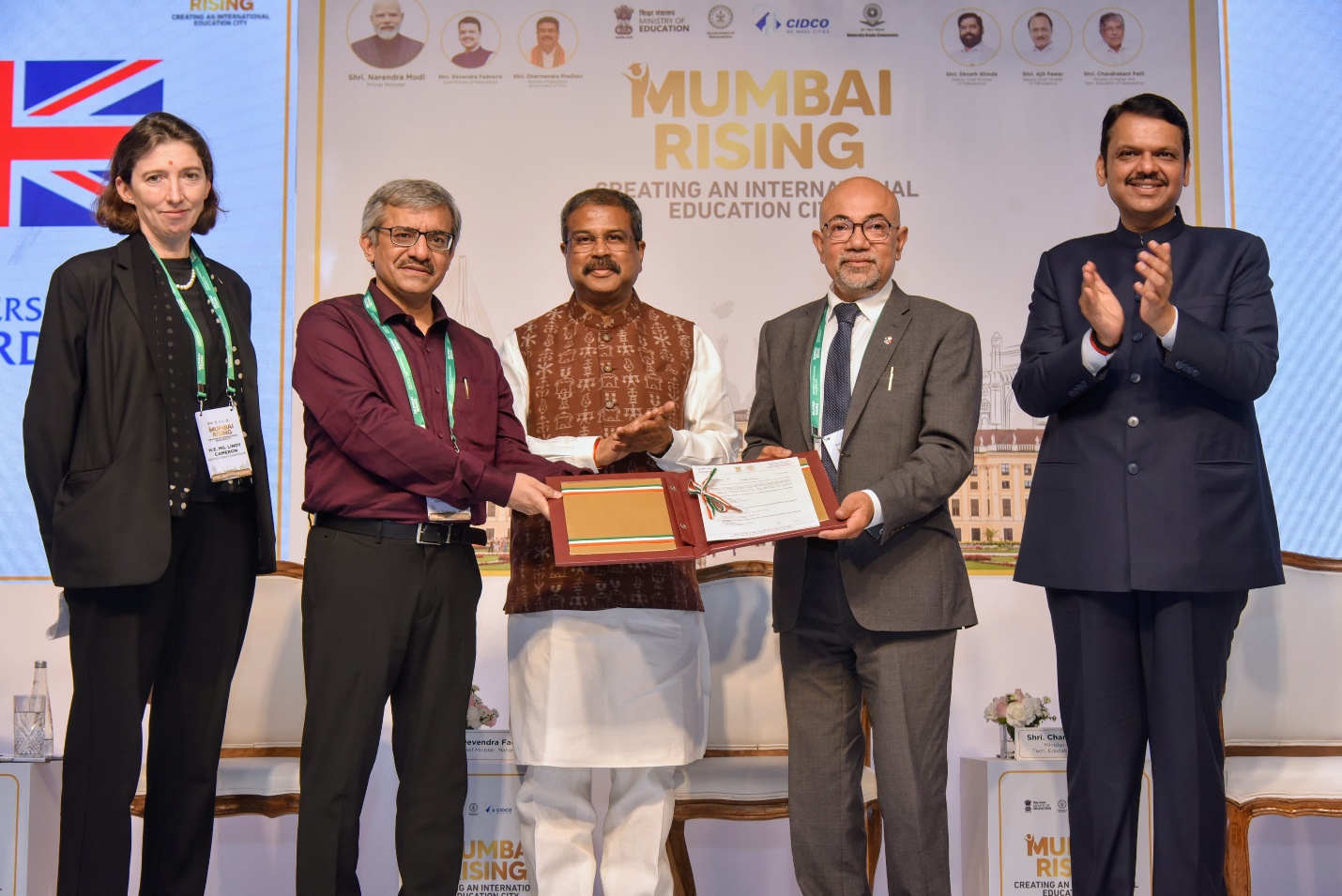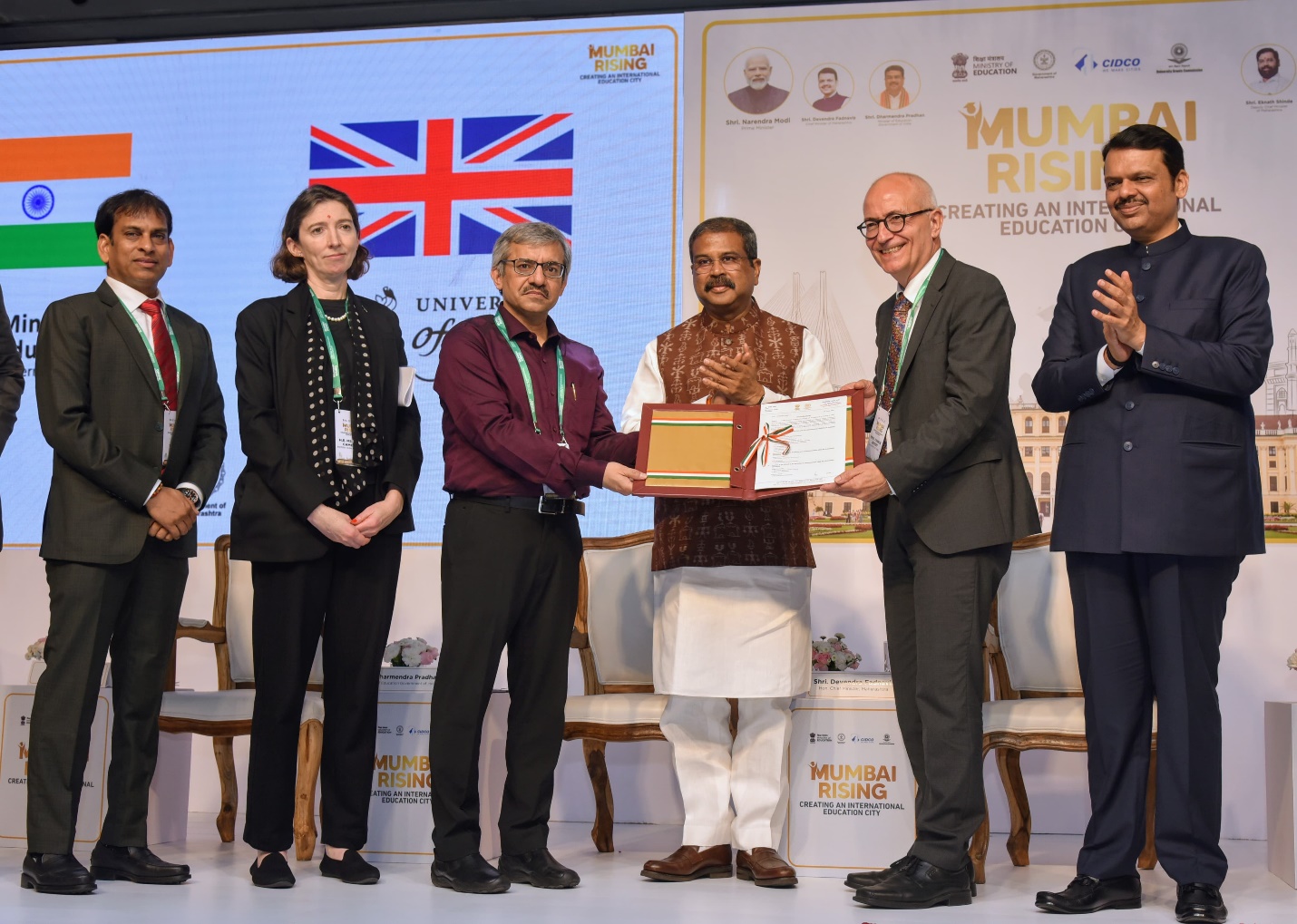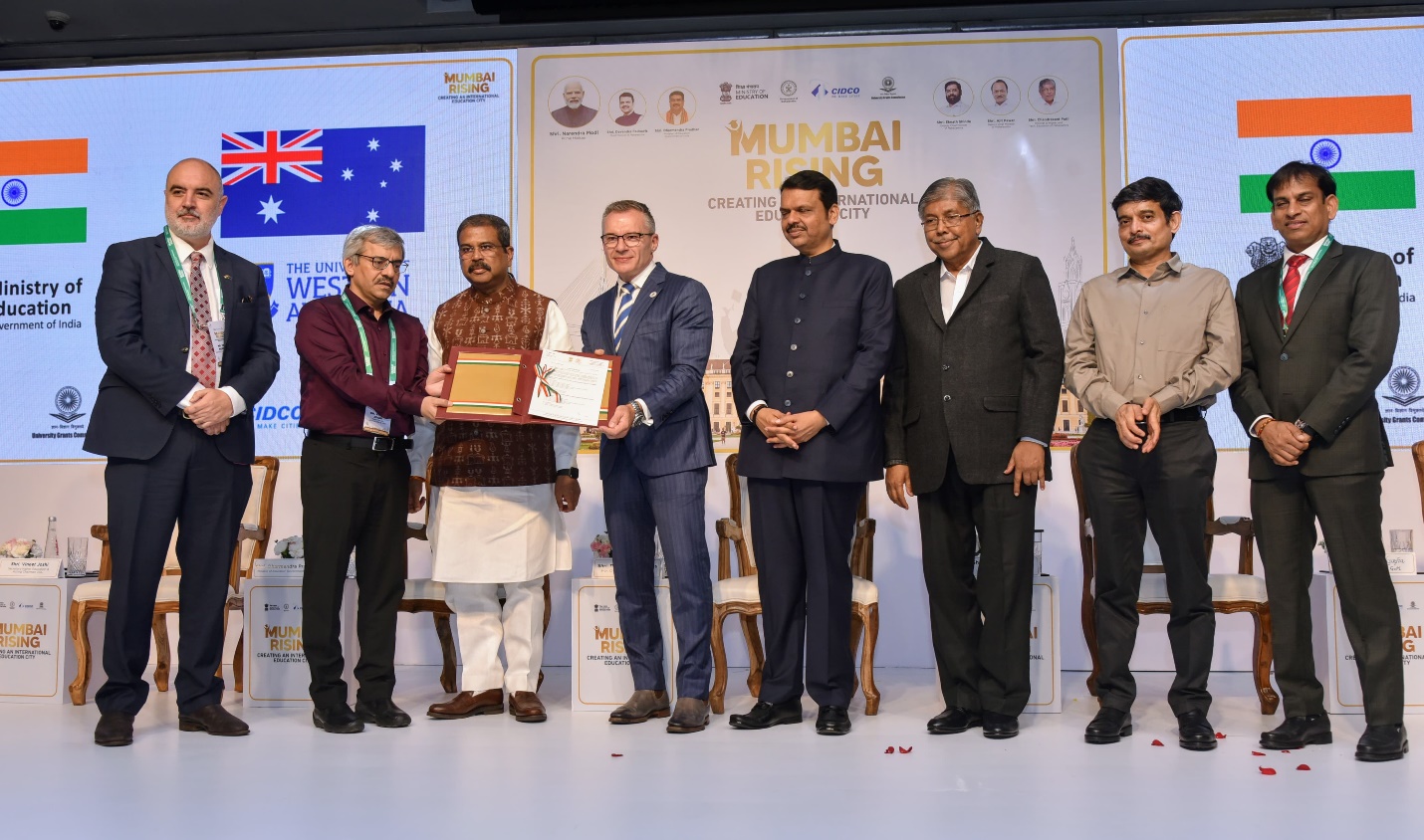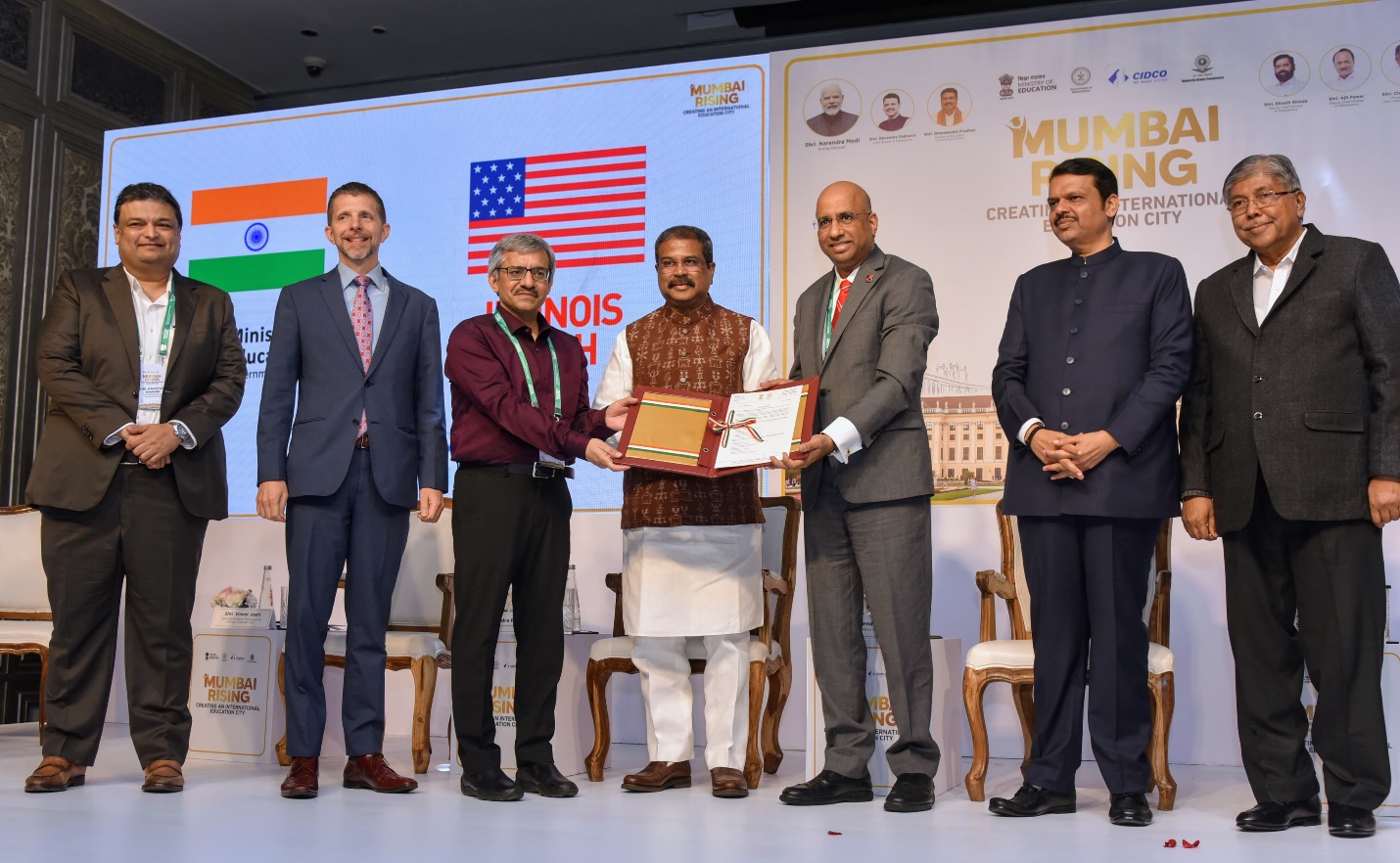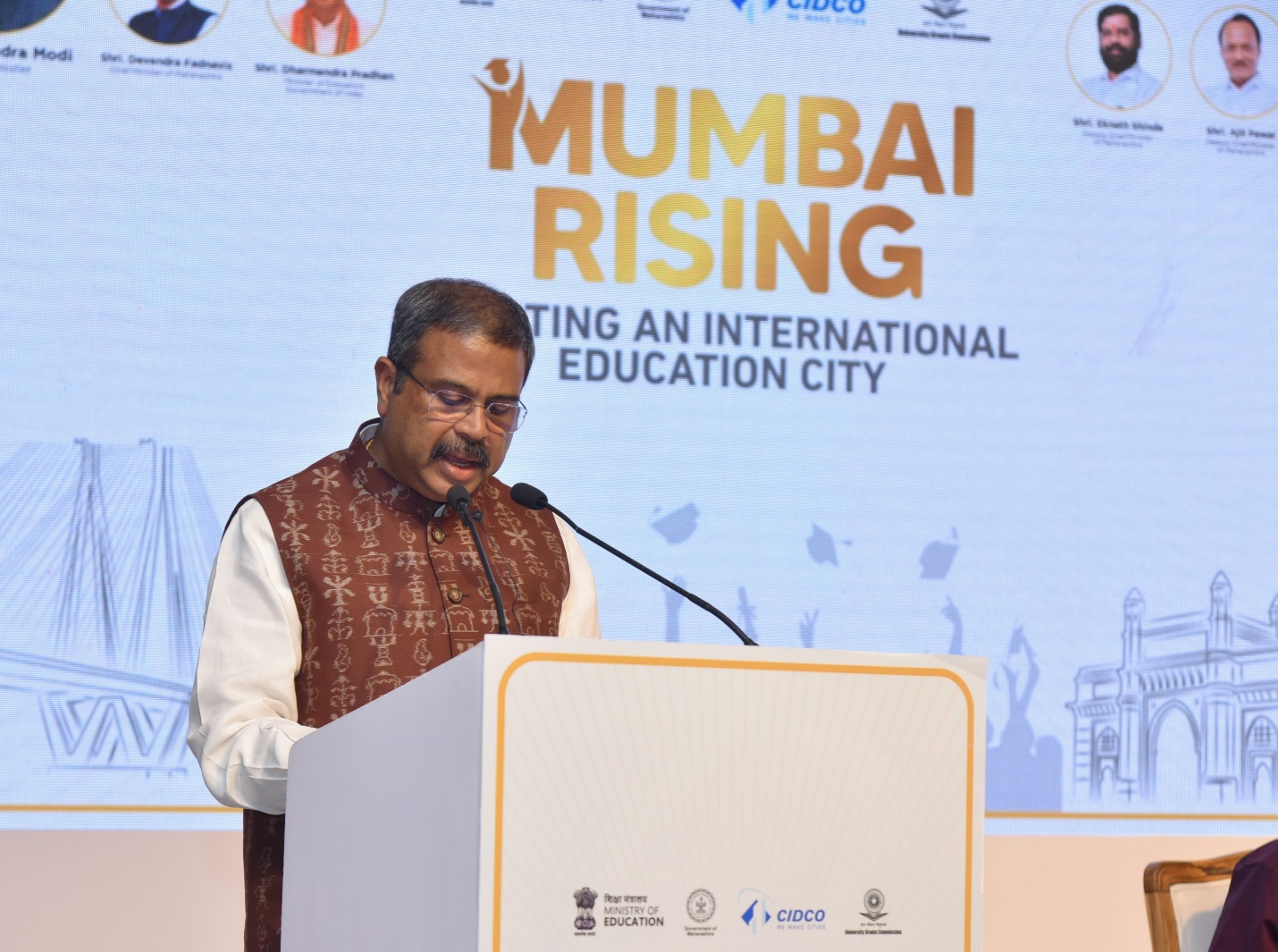In a Major Initiative Towards Fulfilling NEP 2020 Vision, Letter of Intents (LOIs) Issued to Five Foreign Universities - University of York, University of Aberdeen, University of Western Australia, Illinois Institute of Technology, and Instituto Europeo Di Design (IED), Italy to set-up Campuses in Mumbai.
Mumbai to become a Global Education Capital under the Vision of NEP 2020 : Shri Dharmendra Pradhan
As We Mark Five Years of NEP 2020 Implementation, this Milestone Reflects the Spirit of Sankalp Se Siddhi, Empowering Youth and Driving Innovation-Led Growth Towards Viksit Bharat: Shri Dharmendra Pradhan
Courses at UG & PG Level Offered in Areas such as Business, Economics, Computer Science, Public Health, Data Science, Design, and Many More
Mumbai, 14th June 2025
The Ministry of Education has taken a major step towards realizing the goals of internationalization of education as envisioned in the National Education Policy (NEP) 2020. In a ceremonial event titled ‘Mumbai Rising: Creating an International Education City’ held in Mumbai, Letters of Intent (LoIs) were issued to five globally reputed universities from the United Kingdom, Australia, the United States of America and Italy.
The establishment of the branch campuses of University of York, University of Aberdeen, University of Western Australia, Illinois Institute of Technology and Instituto Europeo Di Design (IED), Italy, reflects a deep and growing trust in India’s education ecosystem and is a major milestone as we mark five transformative years of the National Education Policy (NEP) 2020.
The handing of the LOIs took place in the august presence of Chief Minister of Maharashtra, Shri Devendra Fadnavis Union Minister for Education, Shri Dharmendra Pradhan; Minister of Higher and Technical Education, Government of Maharashtra, Shri Chandrakant Patil, Principal Secretary, Government of Maharashtra, Shri Aseem Gupta and Secretary, Department of Higher Education & Chairman, UGC, Dr. Vineet Joshi.
The Chief Minister of Maharashtra, Shri Devendra Fadnavis said that the swift issuance of LoIs reflects the speed and commitment of the Government. He thanked the PM for NEP 2020 which has a provision for foreign universities to be a part of Indian education sector. The five universities, he noted, have added immense value to the State and NEP 2020 has truly opened doors for top global institutions to establish campuses in India. He further stated that talented Indian students who faced accessibility and affordability issues in pursuing foreign education can now do so in India at reduced costs. The Government aims to make accessible, global quality education across various domains and further talks are ongoing with 5 more universities, he stated.
Speaking on the occasion, Union Minister for Education, Shri Dharmendra Pradhan said that NEP 2020 envisions India as a global study destination, offering premium education at an affordable cost. He added that with this initiative, we aim to realize the Hon’ble Prime Minister’s vision of positioning India as a global knowledge hub. India is encouraging top international universities to establish campuses here, while empowering Indian Higher education institutions to expand globally.
He further added that this initiative reflects a growing two-way movement of ideas, talent and trust. India is not just participating in global education ecosystem; we are shaping it. Shri Pradhan said that Maharashtra’s leadership in enterprise and intellect and with Mumbai Educity emerging as a city where finance and technology meet education and research, Mumbai/Navi Mumbai will bridge Indian aspirations and global excellence. He further said that we are not just inviting foreign universities; we are co-creating ecosystems of innovation, entrepreneurship and research. As we mark five years of implementing the NEP 2020, this milestone exemplifies the spirit of Sankalp se Siddhi, the journey from resolution to realization. It strengthens our shared goal of empowering youth and enabling innovation-led growth through education leading to Viksit Bharat.
The LoIs handed over today allow the universities to establish their offshore branch campus in India. All five universities from UK, USA, Australia and Italy, receiving the LoIs are ranked among the top 500 in the QS World University Rankings, signifying strong global academic credibility. The University of Western Australia will establish two campuses, one each in Mumbai/Navi Mumbai and Chennai, reflecting the growing confidence of top institutions in India’s regulatory and academic landscape.
This is the first-time foreign universities will establish a presence in Mumbai/Navi Mumbai, with some expected to set up campuses in the upcoming Education City in Navi Mumbai under the UGC (Setting up and Operation of Campuses of Foreign Higher Educational Institutions in India) Regulations, 2023. The establishment of these university campuses in India will be beneficial for students, in terms of extending global course curriculum and study opportunities in India and for research, knowledge exchange, enterprise and engagement. Courses at the Mumbai/Navi Mumbai/Chennai campus will be offered at Undergraduate and Postgraduate levels in areas such as business, economics, computer science, public health, data science, design, and more. These are the disciplines that will drive India’s development in the years ahead and shape the workforce of a ‘Viksit Bharat.’ The universities will launch more courses in the subsequent years of its operations in India.
Secretary, Department of Higher Education & Chairman, UGC, Dr. Vineet Joshi, in his address emphasized the enabling role of the Ministry of Education and UGC in ensuring internationalization of education and introducing enabling regulations to support this goal by opening up avenues for collaboration and giving wings to the aspirations of India’s vast and dynamic talent pool. He further highlighted the transparent, time-bound process of evaluating proposals from foreign universities through a digital portal, also noting that approvals were granted within a record timeframe of just one month. Shri Joshi, welcomed the foreign partners in the ‘Study in India’ initiative not just as collaborators, but as valued members of our academic community.
Also present were senior officials of the Union Ministry of Education, Union Ministry of External Affairs, Government of Maharashtra and the University Grants Commission, alongside dignitaries from the High Commissions & Consulates and representatives from foreign universities, including:
- Ms Lindy Cameron CB OBE, British High Commissioner to India
- Mr. Paul Murphy, Consul General of Australia
- Mr. Mike Hankey, Consul General of the United States of America
- Mr. Walter Ferrara, Consul General of Italy
- Shri Vijay Singhal, Managing Director, CIDCO
- Shri Ashwin Damera, Founder, Eruditus Executive Education
The representatives from High Commissions, Consulates, and Foreign Universities welcomed the Government of India’s visionary move under NEP 2020 to allow offshore campuses. They appreciated the speed and commitment shown in issuing the Letters of Intent. Speakers from the UK, USA, Australia, and Italy highlighted education as a bridge between nations and expressed pride in being part of India’s rising global education story. From design to technology, they committed to bringing the same academic excellence to India.
NEP 2020 places a strong emphasis on attaining the highest global standards in higher education quality. It highlights the need for “internationalization at home” and promotes India as a global study destination. With the current round of approvals, the UGC has now issued a total of seven Letters of Intent (LoIs), including the previously cleared institutions such as the University of Southampton and the University of Liverpool from the United Kingdom to set-up offshore branch campuses in India. It is important to note that Deakin University and the University of Wollongong from Australia were the first foreign institutions to start operations in India, at GIFT City, Gujarat, under the IFSCA regulations.
The 2023 UGC regulations enabling foreign universities to set up campuses in India are only one part of a broader internationalization vision. Parallelly, Indian institutions are going global. IIT Delhi has launched a campus in Abu Dhabi, IIT Madras in Tanzania and IIM Ahmedabad is gearing up to establish a presence in Dubai. Further Indian universities can now form academic collaborations with foreign counterparts through joint, dual and twinning degree programmes and the recently notified Equivalence Regulations that provides a mechanism for recognition and grant of equivalence to qualifications obtained from foreign educational institutions.
This development, aligned with the five-year celebration of NEP 2020, highlights India’s commitment to creating a globally competitive and inclusive higher education ecosystem.
